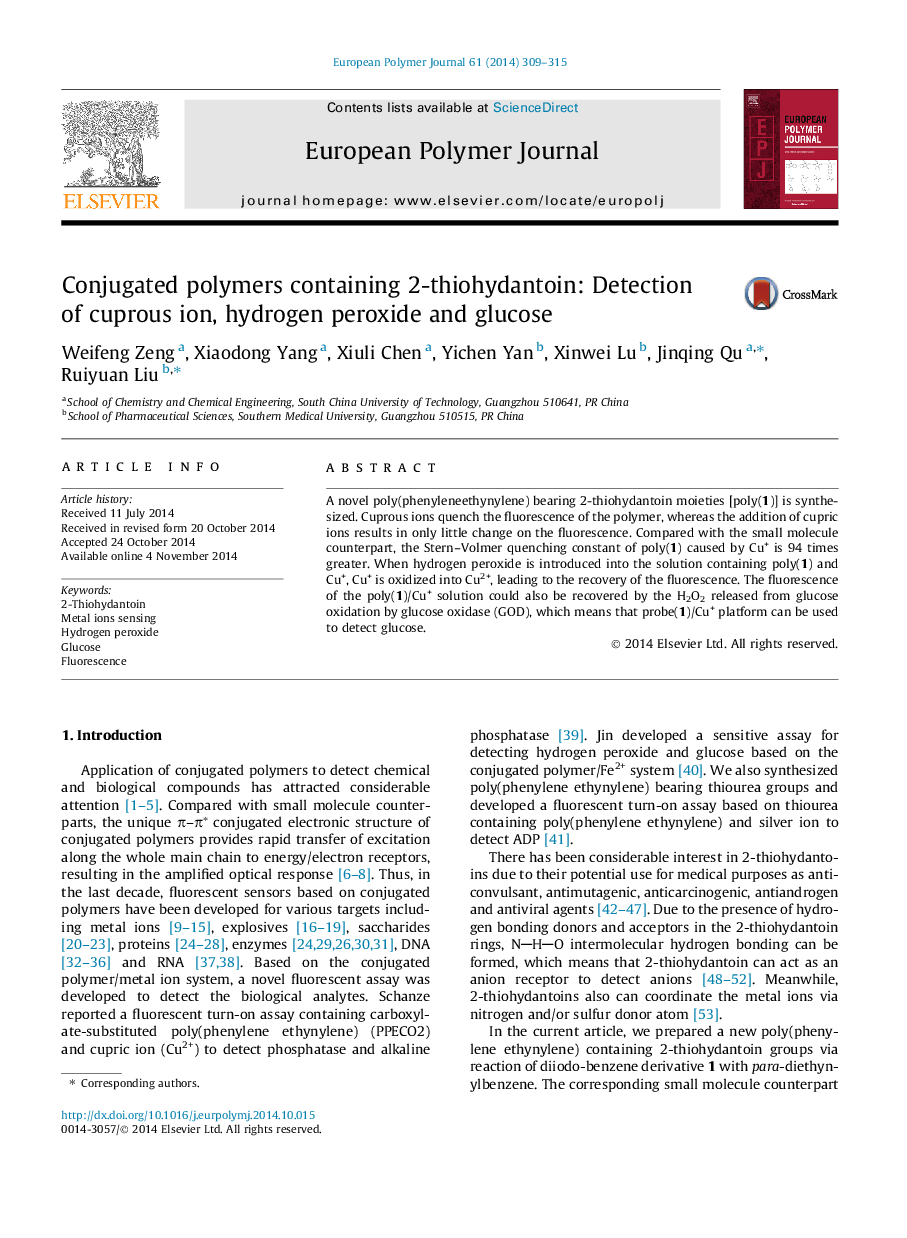| Article ID | Journal | Published Year | Pages | File Type |
|---|---|---|---|---|
| 1398017 | European Polymer Journal | 2014 | 7 Pages |
•Poly(phenyleneethynylene) bearing 2-thiohydantoin moieties is synthesized.•Poly(phenyleneethynylene) exhibits amplified quenching effect to Cu+.•Poly(phenyleneethynylene)/Cu+ platform can be used to detect H2O2 and glucose.
A novel poly(phenyleneethynylene) bearing 2-thiohydantoin moieties [poly(1)] is synthesized. Cuprous ions quench the fluorescence of the polymer, whereas the addition of cupric ions results in only little change on the fluorescence. Compared with the small molecule counterpart, the Stern–Volmer quenching constant of poly(1) caused by Cu+ is 94 times greater. When hydrogen peroxide is introduced into the solution containing poly(1) and Cu+, Cu+ is oxidized into Cu2+, leading to the recovery of the fluorescence. The fluorescence of the poly(1)/Cu+ solution could also be recovered by the H2O2 released from glucose oxidation by glucose oxidase (GOD), which means that probe(1)/Cu+ platform can be used to detect glucose.
Graphical abstractA novel fluorescence chemosensor bearing 2-thiohydantoin is prepared. The polymer exhibits quenching effect only to Cu+. When hydrogen peroxide or glucose (containing glucose oxidase) is introduced into the system containing poly(1) and Cu+, Cu+ is oxidized into Cu2+, leading to the recovery of the fluorescence. This results indicates the solution can be use to detect hydrogen peroxide and glucose.Figure optionsDownload full-size imageDownload as PowerPoint slide
